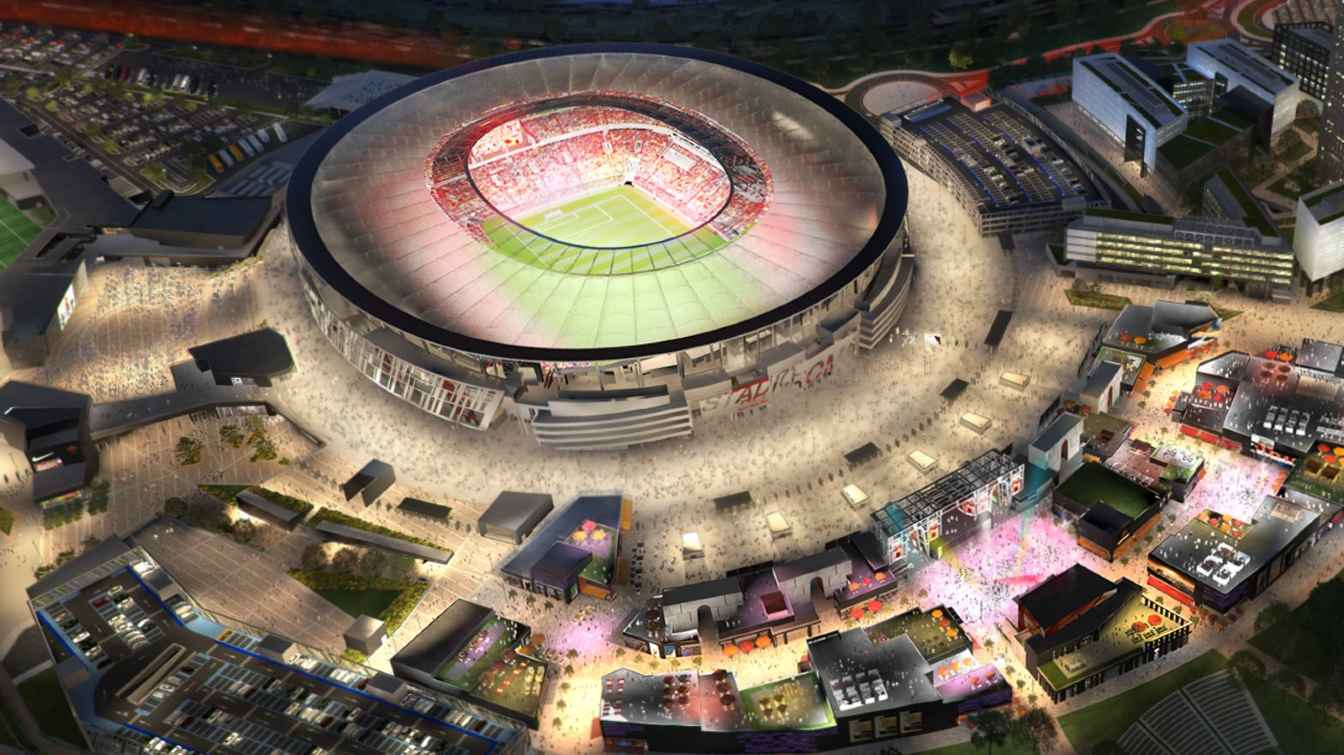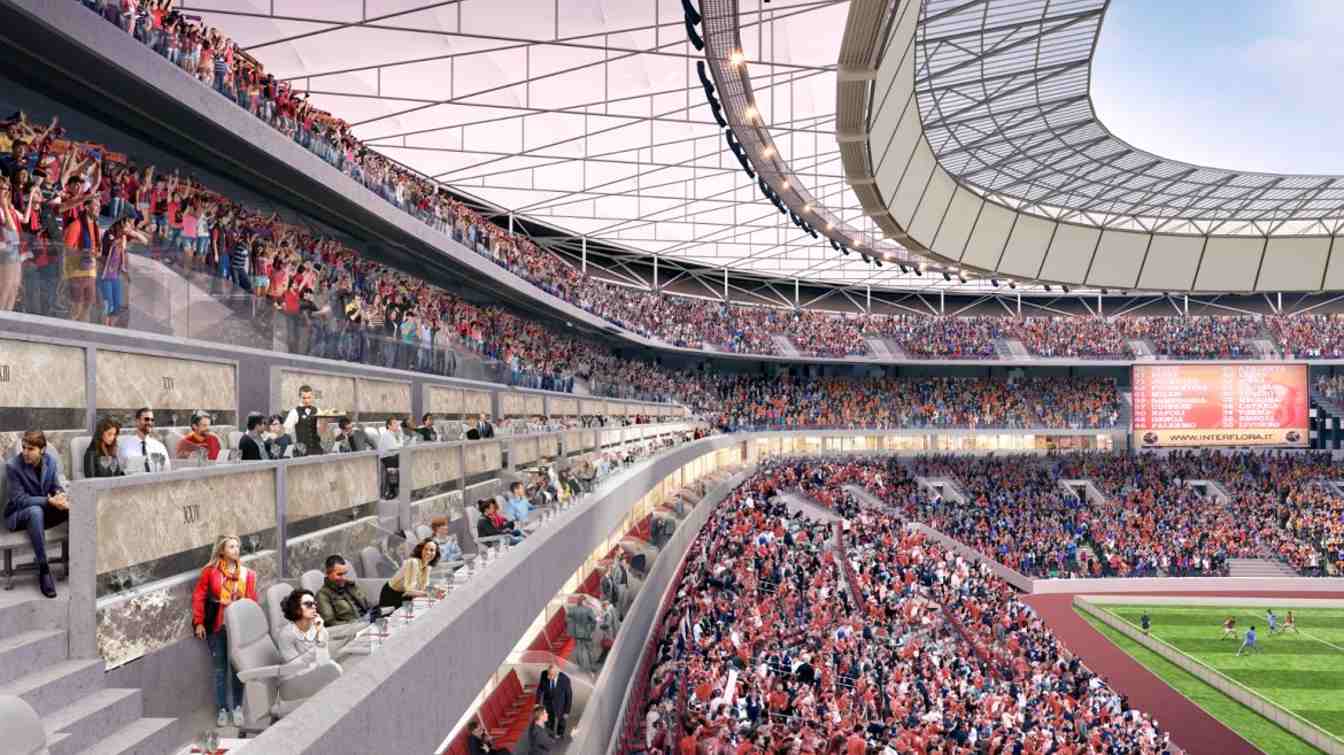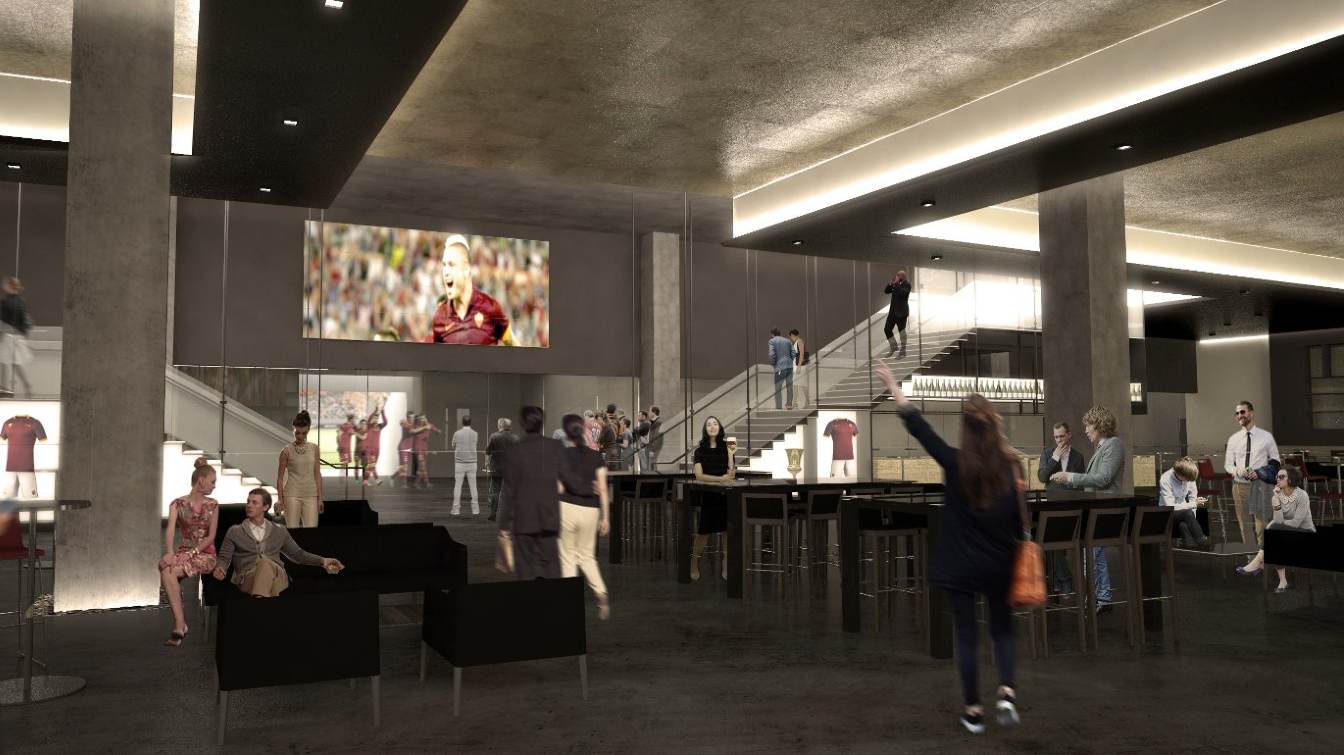Italy: Will mysterious forest delay plans to build AS Roma's arena?
source: StadiumDB.com; author: Jakub Ducki
 In recent months, everything seemed to suggest that we would finally see the complete design of the arena in eastern Rome revealed, but an 'invisible forest' and a decision that could force the AS Roma authorities to look for a new location for their new home. Why has everything been stopped?
In recent months, everything seemed to suggest that we would finally see the complete design of the arena in eastern Rome revealed, but an 'invisible forest' and a decision that could force the AS Roma authorities to look for a new location for their new home. Why has everything been stopped?
Advertisement
Archaeologists required
A few Italian sources report that the construction project is practically ready. The president of Rome's district IV Massimiliano Umberti in Te la do io Tokyo
broadcast on Tele Radio Stereo said: The stadium project is moving forward, we are at the stage of archaeological studies which are decisive for its presentation.
Thanks to the archaeological excavations, it will be possible, on the basis of these studies, to position the stadium in an appropriate way on the ground.
In mid-April 2024, archaeological excavations were carried out on the site, which are required by the Soprintendenze, the Italian supervisory authority. The results of these surveys are not yet known, and in the worst case scenario, that is, any significant relic of the past is found, AS Roma's authorities, together with the designers, will have to find a new location for the ambitious plan for the new arena.
The Board of Curators has granted the Roman club's request and the archaeological work has been split into two phases in order to speed up the whole process. However, it is already clear that the excavations have come to a dead end and are not continuing for the moment. What happened there?
 © ASRoma.it | Design from 2017
© ASRoma.it | Design from 2017
Ghost laurel forest
The activists of the Yes to the park, no to the stadium
committee stood in the way. According to them, there is a laurel forest in the Pietralata district, which, as it turned out, is not listed in the Regional Territorial Landscape Plan. Despite this, the activists swear that it is there. In addition, they demanded a halt to all archaeological and environmental activities that could damage the vegetation in the area.
Yes to the park, no to the stadium
committee exercised their right, which means that if an application is received from any entity, it has to be verified. The anti-stadium gremium pride themselves on having reported the existence of this area, which should be protected by Italian law and the European Community, but they have only now hit a 'sensitive spot' since an inspection will be launched.
In response to access to the documentation reported by the anti-stadium committees, the City Council, has made public documents showing that there are around 800 green and red circles in the area delineated by the photo-interpretation method, i.e.: by detecting objects and phenomena on the basis of very accurate aerial photographs. According to the municipality of Rome, a minimum of 80 trees will need to be removed in order to build the arena.
Now someone will have to resolve the dispute, forest or no forest. Carabinieri from the forestry unit have appeared at the site of the supposed forest, but activists will be calling for another inspection, as they were not involved in the first one. And it is unclear how long the process will take. The start of construction will extend, it is not yet known whether by a few weeks or a few months. The dream of the AS Roma authorities is to open the stadium on the 100th anniversary of the club's founding, in 2027.
 © ASRoma.it | Design from 2017
© ASRoma.it | Design from 2017
Unusual problems to be continued
As of this moment, it is known that these will not be the Giallorossi's only problems at the future stadium construction site. Two structures from ancient times have been found that will have to undergo additional inspection in the near future and are located in the northern part of the planned project. One is a 30-metre-long cistern
or reservoir for collecting and storing water, which is located near the northern part of the stadium. The other object is a castellum aquae from the Roman period (II AD), i.e. a water distributor that is connected to the cistern.
For this reason, the Board of Curators has already requested a modification of the project - also with regard to the location of the building block - to avoid direct interference with the already known archaeological remains. The second part of the archaeological survey is to be carried out around the southern part of the stadium and the future of the planned 62,000-seats arena will largely depend on it. However, when these will take place, no one knows. The venue is likely to differ from the 2017 stadium design.
 © ASRoma.it | Design from 2017
© ASRoma.it | Design from 2017
Advertisement
 StadiumDB
StadiumDB